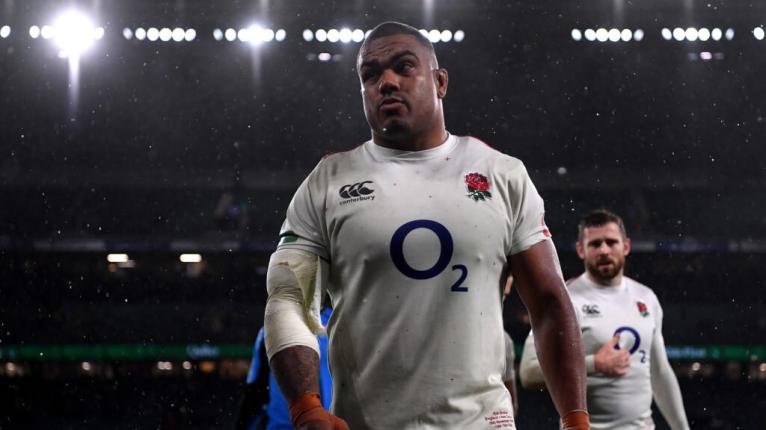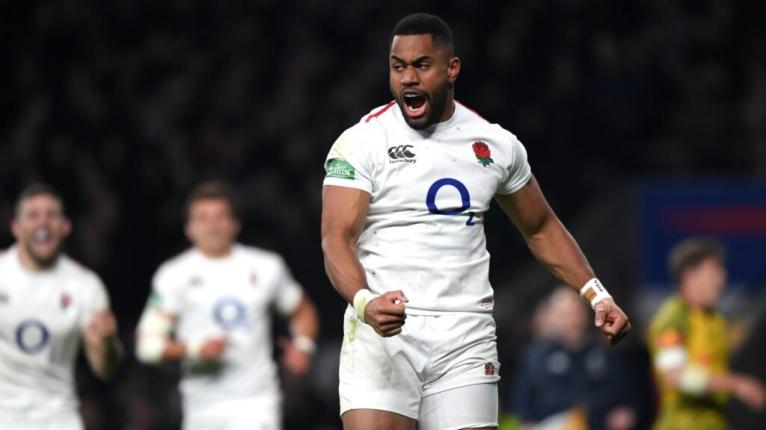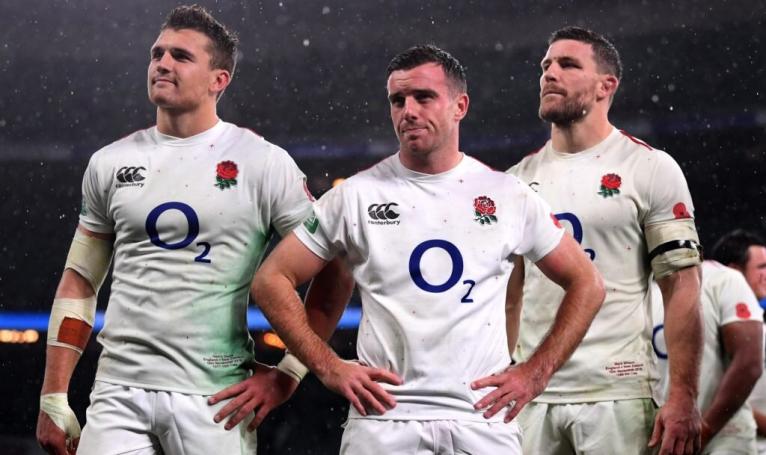England's November Stock Check: Who's rising and who's falling?

England wrapped up their autumn campaign on Saturday afternoon, beating Australia 38-17 at Twickenham, extending their winning streak over the Wallabies to six matches.
It was the most complete performance of November from the northern hemisphere side and stands alongside a 12-11 victory over South Africa, a 16-15 loss to New Zealand and 35-15 win against Japan, to give them a record of three wins and one, admittedly agonising, loss over the last four weeks.
It has been a month of more positives than negatives for Eddie Jones and his men, without ever quite reaching the euphoric levels of some of the performances of 2016. What it was, however, was a much-needed upturn in trajectory and expectations after a poor pre-November 2018, that had seen England lose five of their seven tests.
We have picked out a star man from the autumn internationals for England and cast our eye over rising and falling stock of certain players, as Jones’ side head into a Rugby World Cup year with expectations beginning to rise once again.
Continue reading below…
Watch: World Rugby CEO Brett Gosper talks about the disciplinary inconsistencies over the last month and calls for more cards.
Star Man – Kyle Sinckler
The Harlequins tighthead put together a string of performances that showed just how much he has matured over the last few years, both technically and in terms of his decision-making. He was solid against South Africa, powerful against New Zealand, offered much-needed impact from the bench against Japan and then turned in a complete, masterful performance against Australia.
He has always been a force in the loose, but over the last month he has showcased not only that carrying and ball-handling ability, but also a strong, square set of shoulders in the scrum, going after looseheads such as Scott Sio and Karl Tu’inukuafe. That ability in the loose has been consistently shown, too, with the tighthead having never looked more comfortable and at ease with his role in the England pack.
The biggest improvement, though, is with his discipline. Over the four games, he was only penalised four times, which although doesn’t sound fantastic on the surface, is a very solid mark for a tighthead, especially with two of those four coming against South Africa, one of which was early in the game when the Springboks had a scrum ascendancy, working away at Alec Hepburn on the loosehead. What has been eradicated has been the unforced discipline errors, such as offsides and not releasing at the breakdown, two areas where he used to be guilty of coughing up two or three penalties a game in.

Stock Rising
Owen Farrell
It would have been difficult for Farrell’s stock to have been much higher in the England camp than it was prior to November, yet the displays have only served to highlight his importance to Jones. The lack of direction against Japan before Farrell was summoned from the bench perfectly encapsulated just how much England rely on their current co-captain.
He had a couple of moments over the last four weeks where he rode his luck defensively, with a couple of tackles that seemed right on the cusp of what is legal and illegal, but he has also shown his worth in that area of the game with his line-speed, physicality and clutch ability to step up at the most crucial points. Offensively, he’s been the puppeteer of the English back line, orchestrating some of their best attacking moments against the four visiting sides to Twickenham.
Ben Youngs
A similar story to Farrell, really, with Youngs having further cemented his spot as England’s number one option with a series of commanding displays. Again, the lack of direction England had against Japan, a game in which Youngs was rested, was one of the biggest endorsements of his stranglehold on the nine jersey.
He is sometimes critiqued for his tendency to take a step with the ball before passing, but this often creates space for himself or other players waiting for the ball, and it is not necessarily a negative in terms of the tempo of the game. In fact, England have looked at their most comfortable and effective playing at Youngs’ tempo, which is not slow, but not always the most rapid, either. His appreciation for space and how to manipulate it, his measured kicking game and his responsibility in defence have all also stood out.
Joe Cokanasiga
Two tries in two games for Cokanasiga, as well as a number of opportunities created by his ball-carrying presence and aerial threat. For all the English rugby fans who have been crying out for their own version of Jacob Stockdale, Nemani Nadolo or one of the plethora of options the All Blacks have out wide, Cokanasiga is it.
In the two games he played, he used his size in the way you would expect him to, but he was far from a battering ram, also showing plenty of acceleration and footwork, beating defenders in a multitude of ways. His energy on the kick chase and eagerness for work off of his wing was also impressive and certainly can’t be considered a negative when comparing him to notoriously industrious wings, such as Jack Nowell, Chris Ashton and Jonny May. He’s in the mix to start come the Six Nations.

Depth
A bit of a catch-all term for the other players who impressed over the last month, such as Ben Moon, Mark Wilson and Ashton.
In a post-Joe Marler era, Moon distinguished himself in all four games and surely threw his hat into the mix once Mako Vunipola and Ellis Genge both return to fitness. Along with Sinckler, he helped England rediscover a scrum that can go beyond simply seeking parity with opponents.
Wilson was England’s Mr Consistent during November, filling in solidly at number eight in the absences of Billy Vunipola and Nathan Hughes, as well as looking comfortable on the flank, whilst Ashton showed off his predatory skills and work rate before injury curtailed his international window.
All three have shown themselves to be more than capable options should England’s injury problems persist, whilst also performing at a level where they can genuinely throw down the gauntlet to the more established options in the England 23.
Stock Falling
Dan Cole and Harry Williams
The knock-on effect of Sinckler’s fantastic November is that it drops Cole and Williams down the pecking order. Cole had been having a good season at club level with Leicester Tigers and is still probably England’s best pure scrummaging tighthead, but his surprising omission was made to look less and less noteworthy as Sinckler raised his game to a new standard at international level.
As for Williams, he struggled to keep up with his tighthead rival, not offering as much in the loose as the Harlequin and even at the scrum, where you might have expected him to have an advantage over Sinckler, he struggled to replicate the success of his compatriot. It poses an interesting question to Jones ahead of the Six Nations as to who of Cole and Williams backs up Sinckler in Dublin on February 2nd.
George Ford
It’s impossible to deny that Ford’s value has diminished for England. As a starter inside Farrell, he was a key component for England, but as a pure fly-half on the bench, with Farrell regularly trusted – and needed – to play 80 minutes, his lack of versatility does not help him, especially with Henry Slade providing an ability to cover at 10.
He isn’t likely to fall out of the larger England squad, but equally, he has not made up any ground on Farrell and, if anything, the gap has lengthened. Strong showings in December and January from the likes of Danny Cipriani and Marcus Smith, as well as Slade and Alex Lozowski, could lead to calls that other players could offer more impact and/or versatility from the bench than the Leicester fly-half.

Elliot Daly (at 15)
You don’t want to be too critical of Daly, who didn’t have a bad November by any stretch of the imagination, but that 15 jersey has not been wrapped up. For all the positives he brought, of which there were many, including his counter-attacking, kicking option and attacking reading of the game, he was beaten to the ball in the air and dragged out of position on a number of occasions.
He plays 13 week in, week out for Wasps and that has shown in a few decision-making and execution errors at full-back over the last month. He seems, in Jones’ eyes, to have beaten out Mike Brown for the spot, but will that also be the case once Anthony Watson has returned from injury and got some games under his belt, especially with Bath using him regularly as a 15? Daly is not going to be dropped from the side, but perhaps a spot on the wing or at 13 could be the move once Watson is fit again.
Alex Lozowski
A tough break for Lozowski, who didn’t get an opportunity in South Africa back in the summer when he was in the form of his life and then, when it came knocking in November, it was out of position, playing outside a misfiring half-back combination.
As a 13, he has distinguished himself with Saracens, but as a 12, alongside the combination of Danny Care and Ford, which didn’t quite click against Japan, he was the player sacrificed for Farrell to come to the rescue in the second half. He was then released from the squad for the Australia test and it’s tough to guess when the next opportunity might come for him. Manu Tuilagi is fit once again, and Jonathan Joseph should be back in time for the Six Nations, so England’s midfield competition is only going to get tougher.
Watch: Rory Best reflects on earning an OBE.

































































